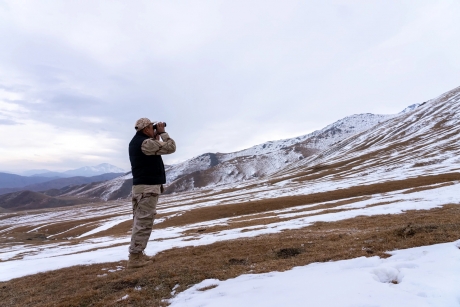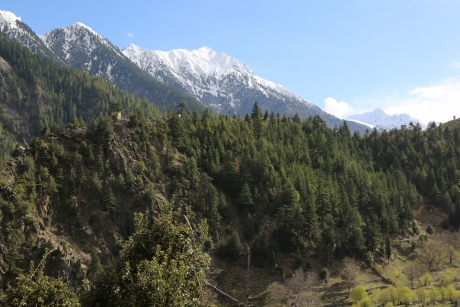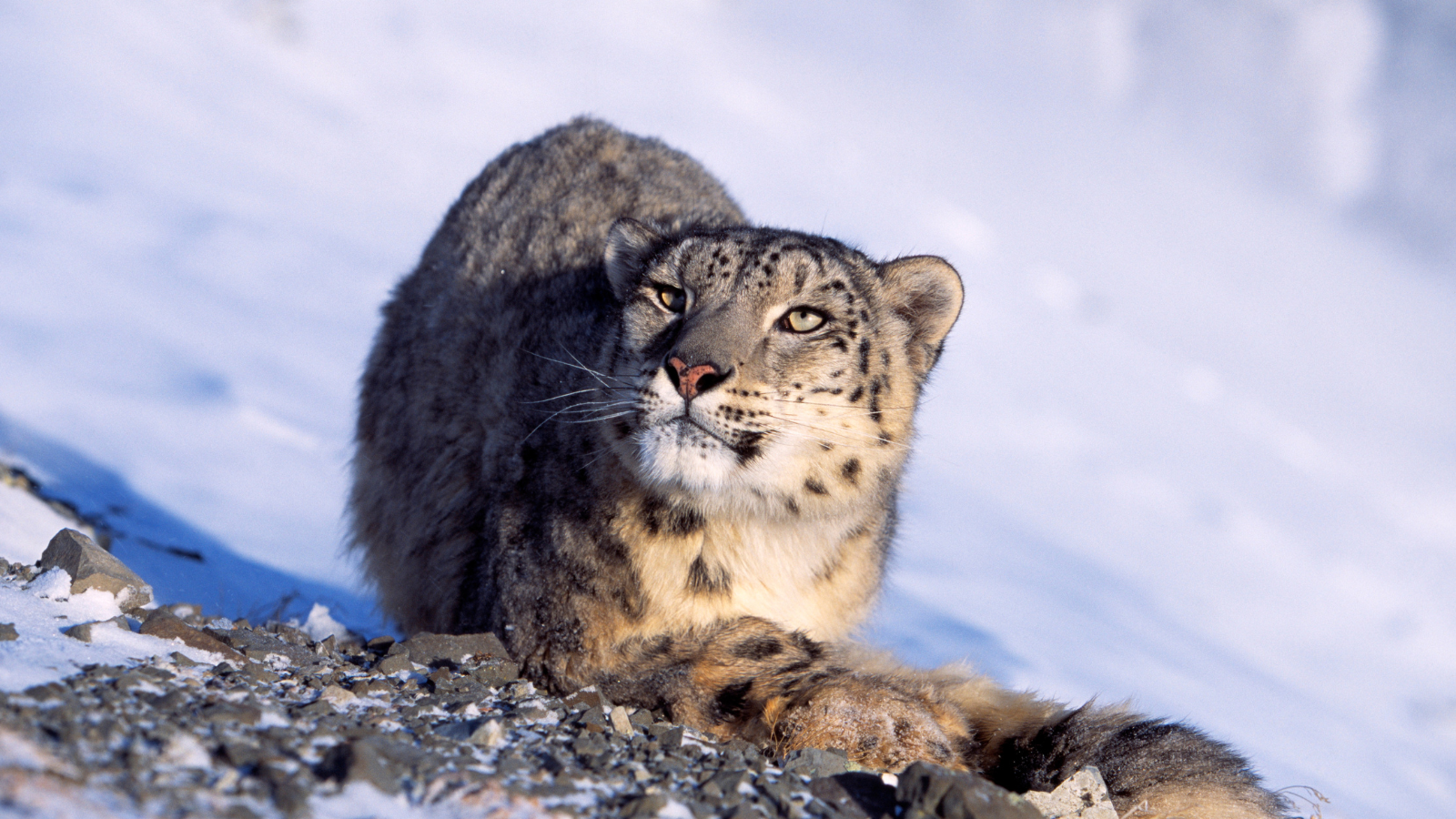In the snowy peaks of Kyrgyzstan’s Tien-Shan mountains, a group of people hike to a remote area, checking and relocating camera traps that monitor wildlife, like the elusive snow leopard – the “ghost of the mountains”. Formerly hunters and fishers, these locals now work as community rangers, patrolling the Baiboosun Nature Reserve. Established by villagers in collaboration with the local non-governmental organization, Central Asian Mountain Partnership (CAMP) Alatoo, this micro-reserve was established to conserve local flora and fauna. Following consultations with local communities, the reserve protects 14 000 hectares of pastures and glaciers, with strict regulations on activities such as hunting and grazing.
Since then, snow leopard and ibex populations are increasing within the reserve. Community members have embraced the new economic opportunities that this offers, from running guest houses to producing cheese and crafting felt souvenirs. Sustainable tourism and green businesses based on yurt homestays, organic products, nature trails and horse-riding have also emerged.
“If not us, who will have a heartache for these uniquely beautiful places,” asks Baatyrbek Akmatov, Director of the Baiboosun Nature Reserve. “That’s why all local residents supported this idea – to make a valuable gift to future generations.”
The established Baiboosun Nature Reserve in Kyrgyzstan is part of a multi-country flagship to restore ecosystems in mountain regions of Kyrgyzstan, Serbia, Rwanda and Uganda. Coordinated by the United Nations Environment Programme (UNEP), the Mountain Partnership Secretariat of the Food and Agriculture Organization of the United Nations (FAO) and the Carpathian Convention, it is a large-scale, long-term ecosystem restoration initiative of the United Nations Decade on Ecosystem Restoration.
For its success in reviving habitats and species – such as snow leopards, mountain gorillas and brown bears – the initiative was honoured as one of the first ten United Nations World Restoration Flagships. By sharing and building on the lessons of the four mountain countries, the initiative demonstrates what can be accomplished when countries work together to protect their mountain landscapes.


Chilgoza pine forests
In another part of the Asian continent, FAO is working in partnership with Pakistan’s Ministry of Climate Change, provincial forest departments and local communities to reverse deforestation and forest degradation of Chilgoza pine forests in the northwest region of the country. Highly vulnerable to climate change, Chilgoza pines (Pinus gerardiana) are an important, high-value species and a unique part of dry temperate forest ecosystems, regulating water flows and conserving biodiversity. They also have the potential to contribute tens of millions of USDs to the local economy by providing products, such as pine nuts, medicinal plants, mushrooms and fuel wood.
FAO provided 600 sets of tools to local committees for cone collecting, allowing for safe harvesting of Chilgoza pine nuts. This resulted in a 25 percent reduction in harm to the trees — all achieved without resorting to tree or branch cutting. Additionally, the initiative set up seven Chilgoza pine nut processing units in strategic locations to help the local community make more valuable products and earn income.
Faizul Bari, FAO Natural Resource Management Advisor in Pakistan, says, “Adapting proper cone collection methods and promoting local value chain development are the essential elements contributing to promoting sustainable restoration and conservation of Chilgoza forests in Pakistan.”
This work is part of the Global Environment Facility (GEF)-funded Restoration Initiative (TRI), implemented by FAO, the International Union for Conservation of Nature (IUCN) and UNEP to overcome existing barriers to restoration and restore degraded landscapes across ten countries in Asia and Africa.

Mountains are home to magnificent ecosystems that provide daily freshwater to half of humanity and help offset the effects of climate change. They directly support the 1.1 billion people living in mountain communities, as well as billions more in connected lowland areas. When mountain ecosystems are healthy and functioning, their benefits reach far beyond mountain regions.
Yet the climate crisis, biodiversity loss, land use change and pollution are degrading mountain ecosystems, with profound consequences on the lives and livelihoods of people living in and around mountain areas.
This year for International Mountain Day, FAO is spotlighting mountain ecosystem restoration. Halting, preventing and reversing the degradation of mountains can help to not only protect vital ecosystem services such as water, but also contribute to increasing mountain communities’ climate resilience and creating new jobs in rural economies.
This article was originally published by the Food and Agriculture Organization of the United Nations.


